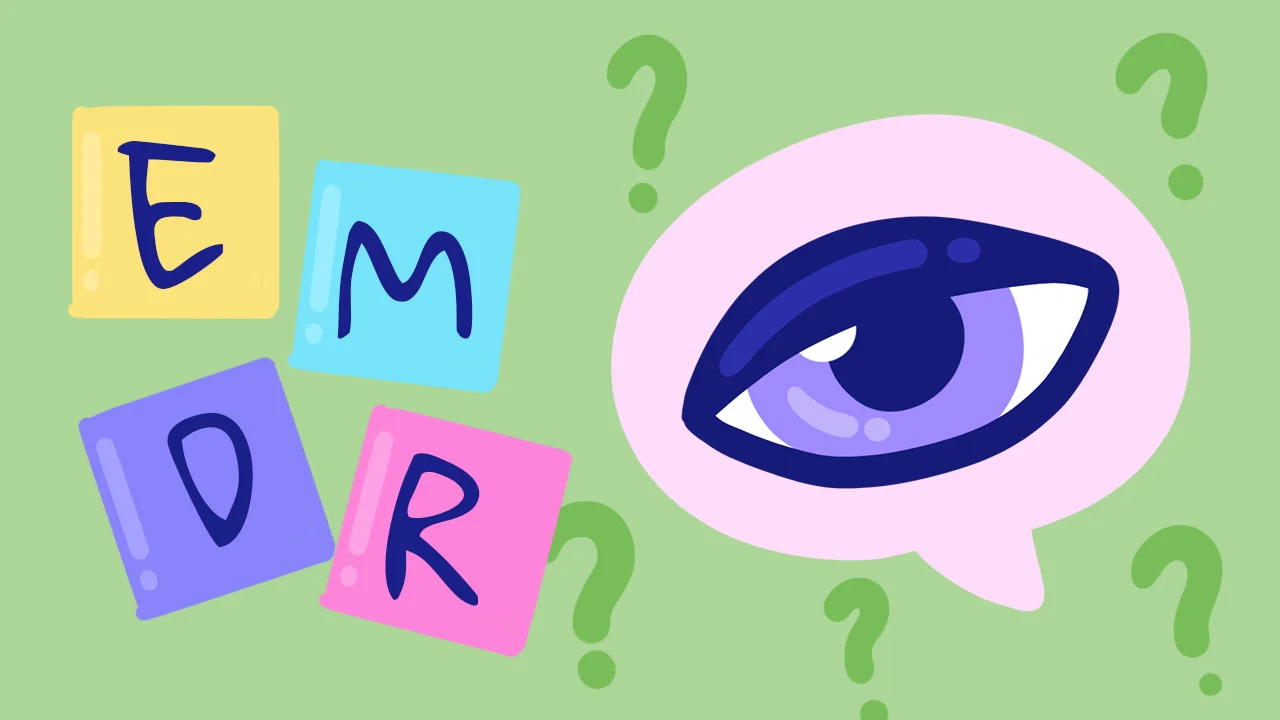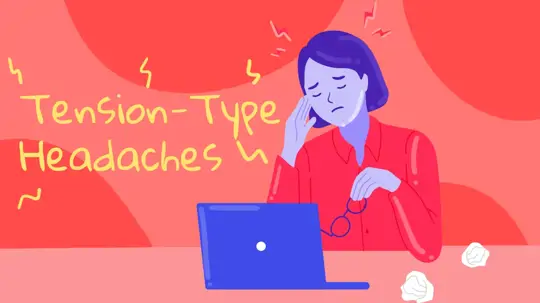
Start feeling better today!
Connect with your therapist today and take control of your life like our 850.000 happy clients.
Get StartedWhat is EMDR?
The goal of EMDR is to reprocess eye movement desensitization as well as traumatic experiences. Francine Shapiro created this therapy technique. It is known by the abbreviation formed by the first letters of its English name (Eye Movement Desensitization and Reprocessing).
Despite the fact that EMDR therapy is named after eye movements, it actually employs a wide range of stimuli. Some of them include eye movements, voice stimulation, and knee stimulation.
Every experience we have alters our brain and the physiology to which it is linked. When we have an experience, all of the information we receive through our five senses (touch, sight, hearing, smell, and taste) is processed and integrated with our thoughts, emotions, and body sensations. All of this information has the potential to influence our behavior.
It has been discovered that activating the client's information processing system helps to achieve the curative effect. EMDR therapy incorporates elements of numerous therapy approaches, including neurophysiology.
The Emergence of EMDR
EMDR began as a therapy for the treatment of people suffering from Post Traumatic Stress Disorder. Individuals have been found to be successfully treated for the chronic symptoms they experienced after their trauma. The significance of the traumatic event, as well as how the individual internalized it, drew attention away from the symptoms and toward the event itself.
EMDR and Therapy Approaches
EMDR is a technique that can be incorporated into a wide range of psychological theories. Here are some examples:
- Psychodynamic
- Behavioral
- Cognitive
Psychodynamic Approaches
Opening a space for free association, which is critical in psychodynamic therapy, improves memory required for the decoding process in EMDR therapy. It is critical to have a flat wall in front of the client during EMDR sessions so that they are not distracted and can freely associate. Distractions such as colorful paintings, the room itself, books, trinkets, tables, or the view outside the window should be avoided.
Behavioral Approaches
According to Pavlov's theory of classical conditioning, the conditioned response happens when the conditioned stimulus is shown to the animal over and over again. In the traumatic event, some behavioral responses that increase exposure to the conditioned stimulus were used to get rid of the conditioned response anxiety and physical responses to the conditioned stimulus.
Depending on the severity of the traumatic event, administering the conditioned stimulus only once may be sufficient. For example, someone who has lost their home and family as a result of an earthquake may develop and generalize a negative belief about safety. Although EMDR does not provide a continuous stimulus, it does aim to reduce negative reactions by briefly exposing the individual to the traumatic memory.
Cognitive Approaches
Cognitive approaches concentrate on the individual's thought process. It is more important how the individual internalizes the event than what the event is and how it occurred. If we imagine our brain as a black box, the cognitive approach deals with what's inside. It does not deal with inputs and outputs. The meaning that the individual attributes to the traumatic event is important as a result of the event. EMDR focuses on the trauma relationship behind these negative thoughts and provides the option to reframe.
EMDR and Trauma
Trauma is simply defined as a series of negative life events. Trauma refers to issues that the brain experiences but cannot fully name, reflect on, or resolve. Traumas are frequently pushed to the edges of consciousness. These unresolved events can manifest in daily life through family, work, friends, and romantic relationships.
Trauma Examples
- Witnessing or being exposed to violence
- Harassment
- Rape
- Abduction
- Natural disasters (floods, fires, earthquakes, etc.)
- Childhood events (neglect, abuse, loss of a parent, relocation, etc.)
- Negative events in family, work, or school in daily life
Unprocessed events carry a heavy emotional burden or are inexplicable. As a result, we are beginning to see the consequences of these events in our daily lives.
What are the Effects of Trauma?
Trauma can touch our lives in many unexpected ways, affecting both our mind and body. Here are some common feelings and conditions people often face after going through traumatic experiences:
- Depressive mood
- Anxiety
- Skin problems
- Chronic pain
- Weight gain or loss
- Headaches
- Chronic fatigue
- Panic attacks
- Sleep problems
- Eating problems
EMDR and Adaptive Information Processing Theory
EMDR is based on Adaptive Information Processing theory. According to this theory, mental problems are caused by traumatic memories and the inability of the brain to function. Unprocessed memories formed as a result of traumatic events can be processed using EMDR. It allows the brain to perform processing that it wasn't able to do in a safe environment at the time.
Unprocessed memories become integrated with existing functional memories following EMDR. The goal is not to convince the client that the event never occurred. The goal is to gain new perspectives in order to eliminate existing and bothersome symptoms.
The lived events are not denied by EMDR. The traumatic experience has occurred, but EMDR aims to eliminate the discomfort associated with the memory following EMDR. It enables the individual to change their perspective on the traumatic memory as well as develop new perspectives that they can apply in their daily lives.

The Uses of EMDR Therapy
Scientific research provides the best answer to the question of whether EMDR therapy works. The efficacy of EMDR therapy in treating various problems and disorders is being demonstrated in research studies on a daily basis. Anyone suffering from the following conditions can benefit from EMDR therapy:
- Depression
- Panic disorder
- Phobias
- Chronic pain (migraine headaches, fibromyalgia)
- Somatic disorders
- Body image disorders
- Traumatic stress disorder
- Sexual or physical harassment
- Performance anxiety
- Exam anxiety
- Grief
- Uncomfortable memories
- Sexual dysfunction
- Complex trauma
- Eating disorders
- Addiction
How Does EMDR Work?
Let's look at the application of EMDR therapy: EMDR uses a three-way protocol based on the past, present, and future. The standard EMDR protocol has eight stages.
- Client's Story / Therapy Planning
- Preparation
- Assessment
- Desentization
- Installation
- Body Scan
- Closure
- Re-evaluation
1. Client's Story / Therapy Planning
The trauma history of the client is recorded. The person's motivations, goals, and resources for seeking therapy are discussed. The suitability of the client for the EMDR process is assessed.
Do they have any illness? Do they take any medication? Have they previously received therapy? Are any changes in their lives expected while they are going through this? Finally, is there an issue that needs to be addressed as a priority at work or in their personal life?
The client's coping skills are assessed. The ability to cope with intense emotions that may arise during the EMDR process is called into question. As a result, changes are made to the therapy plan.
2. Preparation
The establishment of a bond between the client and the therapist is one of the most important aspects of the preparation phase. The client should be fully informed about the EMDR process. Relaxation techniques are used. It is explained to the client what they might experience during or after the EMDR sessions. It is critical that the client be able to apply the relaxation and safety techniques they have learned during the preparation stage in their daily life.
The client is educated on the EMDR theory. If events in the client's life are likely to occur as a result of the process, these should be addressed. If the client needs to relocate, for example, an action plan should be developed.
3. Assessment
The therapist determines which memories require intervention during the evaluation phase. If there are events in the client's life that are likely to occur as a result of the process, these should be addressed. The client is asked about the most disturbing image of this event, as well as the negative cognitions, emotions, and body sensations that accompany it. The level of discomfort is measured on a 10-unit SUD scale. Positive cognition is chosen for the fifth stage as a result of working with the memory. On a 7-unit VOC scale, this cognition is valid.
4. Desensitization
This is the most time-consuming part of the EMDR process. The processing of the traumatic memory begins. When the client's associations come up, the therapist may intervene. The goal is to keep going until the client's discomfort level goes down and new perspectives emerge.
At this stage, eye movements are permitted. If the client becomes tired of the eye movements or expresses discomfort, one of the other two-way stimulations can be initiated.

5. Installation
The goal is for the client's negative cognition to be replaced with positive cognition. This section is repeated until the VOC level reaches 7. When this section is completed, another positive cognition may emerge from the one determined at the start. It is the therapist's responsibility to question this and obtain the client's most suitable cognition for that scene.
6. Body Scan
From the start, the client is asked to scan their body and note any negative sensations. If the client experiences discomfort, the discomfort is processed until the client relaxes. If the client does not express any negative emotions, the state of comfort is processed, and the body scanning is finished.
7. Closure
The goal is to return to a comfortable state at the end of the session. The session is concluded by employing the relaxation techniques that have been most frequently studied with the client. Following that, a discussion is held about how to deal with any negative thoughts or feelings that may arise, and questions are answered. THey clients is reminded of what can happen following an EMDR session.
8. Re-evaluation
It is completed at the start of each session. The client's reactions are assessed after the moment has been studied. Inquire whether they have any new awareness or discomfort. Other EMDR protocols may be triggered if a new awareness emerges after a memory has been studied. The client's behavioral changes that they have made or wish to make are discussed.
Kaynakça
- Shapiro, F. (2001) EMDR Eye Movement Desensitization and Reprocessing, Basic Principles, Protocols and Procedures. Istanbul: Okuyan Us Publishing House (5th Edition)
- Yaşar, A.B. (2021) Change in the Brain with EMDR Therapy, Healing in Spiritual Trauma Therapy. Istanbul: Psychonet Publications (1st Edition)





